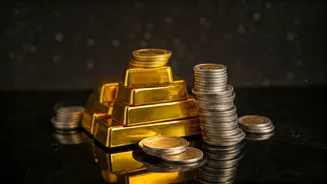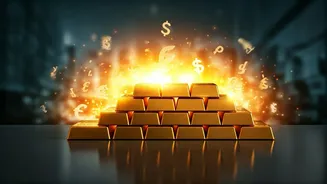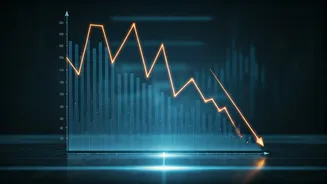Market Price Dynamics
Gold and silver are often viewed as safe-haven assets, which is why they are frequently used by investors to hedge against economic uncertainties and downturns.
Their stability is influenced by a complex interplay of economic indicators, geopolitical events, and investor sentiment. Currently, these metals have demonstrated a relative consistency in their pricing. The demand for gold, especially in nations like India, is fueled by cultural traditions and the usage of gold during significant celebrations such as weddings and festivals. This consistent demand, combined with the supply dynamics and global economic factors, shapes the market values of these precious metals. Similarly, silver, which also has industrial applications, is influenced by industrial demand, coupled with investor interest as a store of value. The interaction of these multifaceted factors results in price trends that analysts constantly monitor.
Fed Rate Cut Influence
The US Federal Reserve's monetary policy plays a critical role in the pricing of precious metals. The potential for the Fed to cut interest rates is a key consideration for investors. Lower interest rates generally reduce the opportunity cost of holding non-yielding assets like gold and silver, potentially increasing their appeal. This could lead to a rise in demand, driving prices upward. A rate cut may also weaken the US dollar, making gold and silver more affordable for international buyers. Conversely, expectations of rate hikes or economic growth often strengthen the dollar, potentially causing a decrease in precious metal prices. Therefore, the market closely watches the Fed's announcements and economic indicators to anticipate changes in gold and silver values. The impact of such changes often depends on the strength of the economy and the level of inflation.
Geopolitical Event Impact
Geopolitical events invariably have a significant influence on the prices of gold and silver. As safe-haven assets, these precious metals often see increased demand during times of international instability, conflicts, or heightened political uncertainty. When investors perceive increased risks in other markets, they tend to move their funds into gold and silver, considering them a safer store of value. For instance, events such as the Russia-Ukraine war and trade tensions between major economic powers influenced the buying and selling patterns in gold markets. Political decisions, sanctions, and any event that could affect the global economy or investor confidence may lead to a price increase. As such, investors often watch global events closely and adjust their investment strategies accordingly. Their actions, in turn, exert downward and upward pressures on the market.
Inflationary Pressures Analyzed
Inflation is another critical factor that impacts the prices of gold and silver. Historically, these metals have served as hedges against inflation. When inflation rises, the purchasing power of fiat currencies declines, making gold and silver more appealing as a way to preserve wealth. Many investors consider them a store of value that can maintain its worth or even increase in value during inflationary periods. Conversely, when inflation is well-controlled or falling, the appeal of gold and silver might diminish. The relationship between inflation and precious metal prices, though, is not always linear and can be influenced by other factors such as interest rates and investor expectations. Considering these relationships, analysts and investors carefully monitor inflation data to assess its potential impact on the gold and silver markets, allowing them to adjust investment strategies appropriately.
Economic Indicators Explained
Various economic indicators also play an important role in determining the direction of gold and silver prices. The strength of the US dollar is one of the most significant indicators, as gold and silver are often traded in US dollars. A weaker dollar can increase the demand and prices of these precious metals, while a stronger dollar can have the opposite effect. Additionally, the data on inflation rates, such as the Consumer Price Index (CPI) and the Producer Price Index (PPI), provide insights into inflationary trends that can influence the appeal of gold and silver as inflation hedges. Also, factors like Gross Domestic Product (GDP) growth, unemployment rates, and manufacturing activity contribute to the overall economic outlook, thereby affecting investor sentiment and the demand for precious metals. Therefore, investors often track a multitude of economic indicators to make informed investment decisions, understanding that these signals are interconnected and can offer clues about future price movements.
Investor Sentiment Impact
Investor sentiment is another crucial factor influencing the price movements of gold and silver. Positive sentiment and optimism in the market can lead to increased risk appetite, which might reduce the attractiveness of safe-haven assets like gold and silver. Conversely, when investors become risk-averse due to economic uncertainty or geopolitical tensions, they tend to flock towards these metals. This increased demand drives up their prices. Social media, financial news, and expert opinions all contribute to shaping market sentiment. Herd behavior, where investors follow the actions of others, can amplify price fluctuations. Changes in investor sentiment are often reflected in trading volumes, which provide an indication of market enthusiasm or caution. Staying informed about the prevailing investor sentiment, and considering it in conjunction with other economic indicators, assists in making well-informed decisions.











